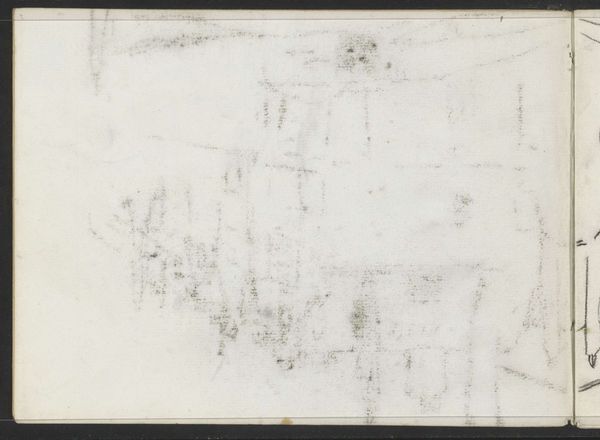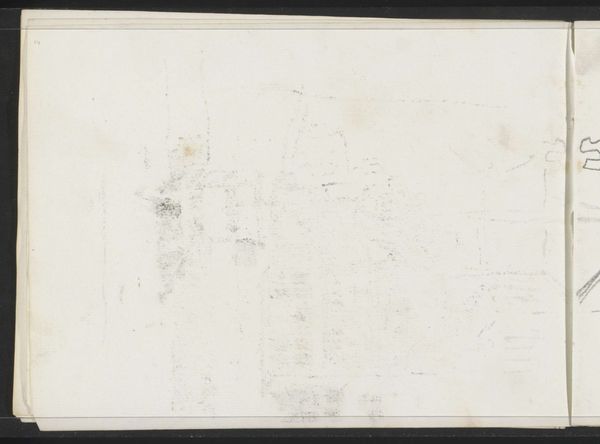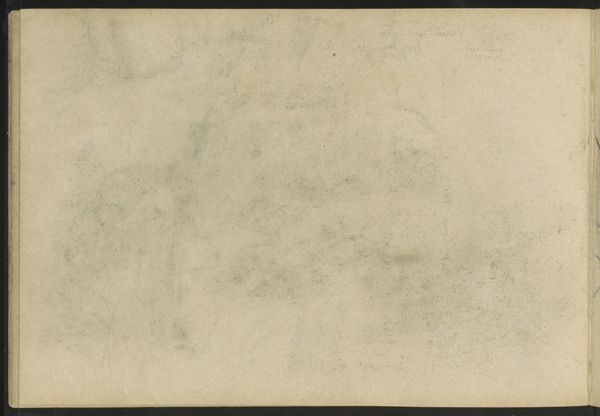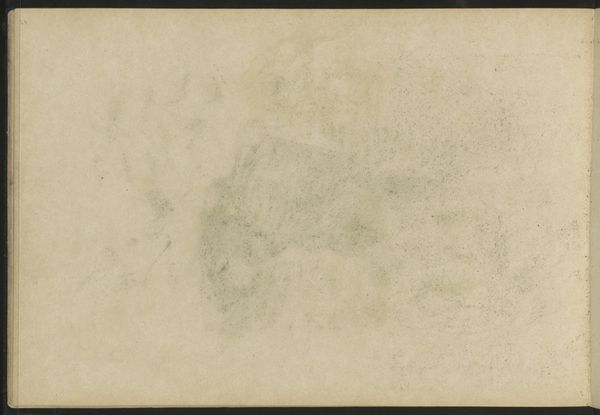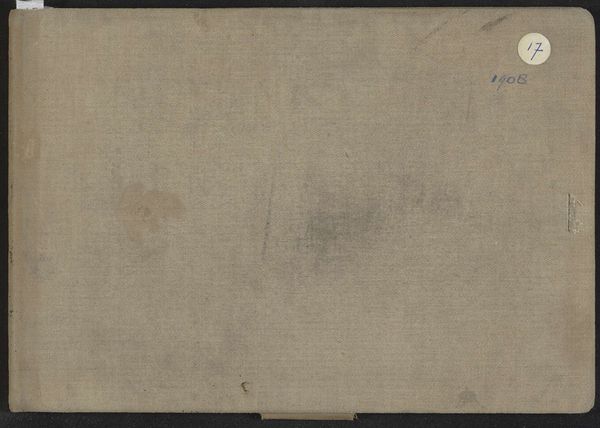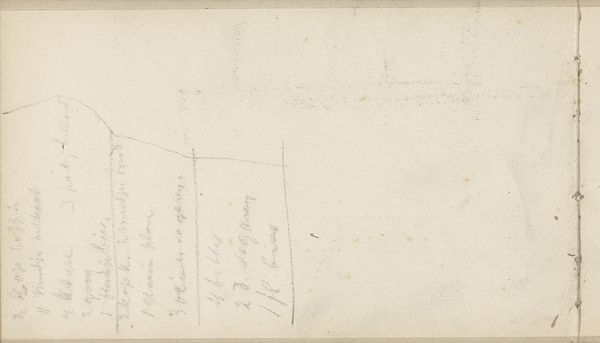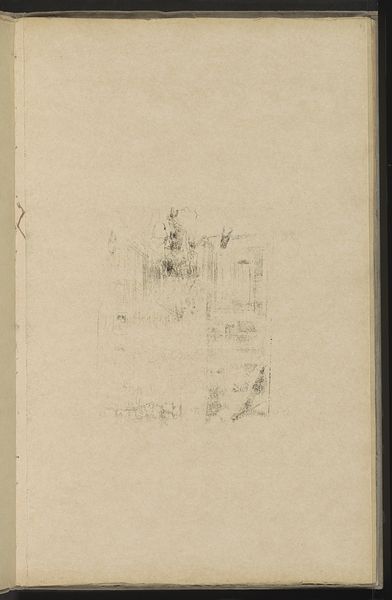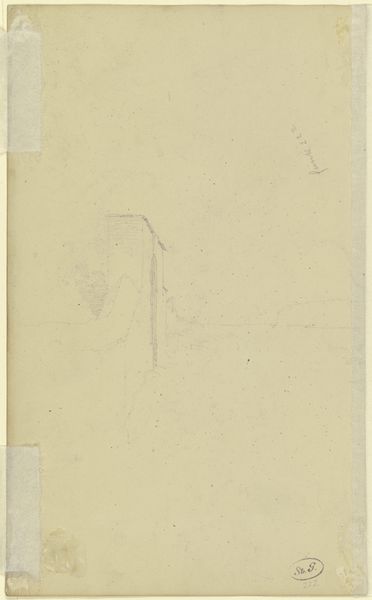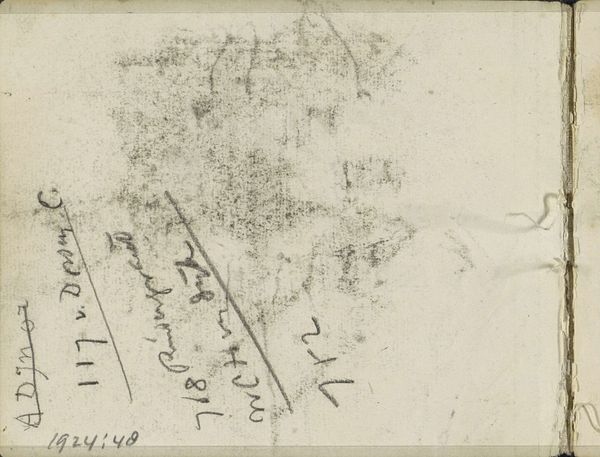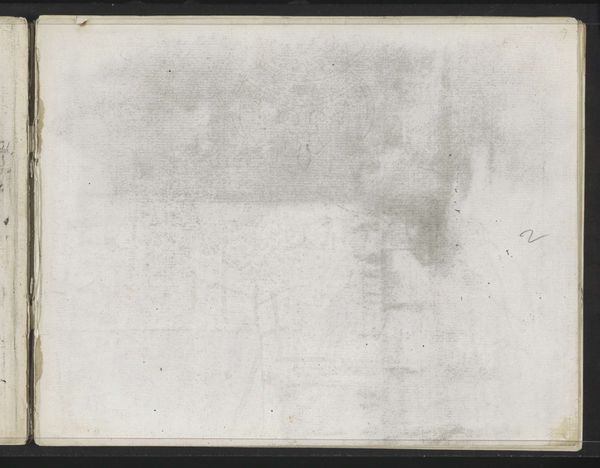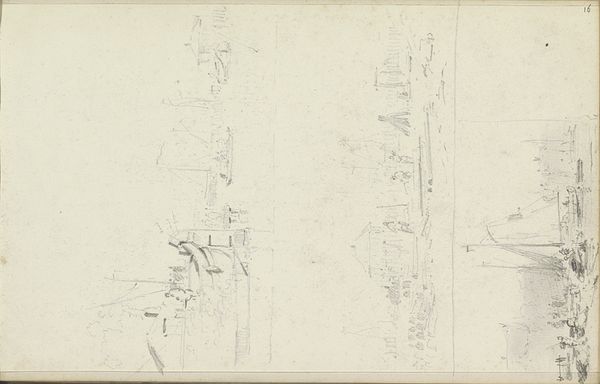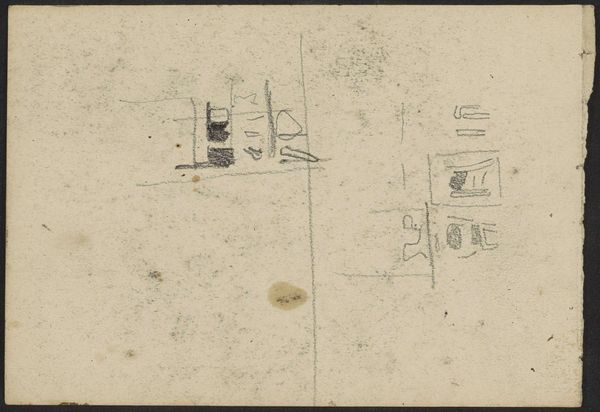
Copyright: Rijks Museum: Open Domain
Curator: It's tempting to see an echo of Zen Buddhism in the deliberate use of negative space in this impressionistic landscape. Editor: It looks like the artist just started sketching and then...stopped? Did he forget his glasses? Curator: Let me introduce you more formally. What you're seeing is entitled "Ramen," made around 1897 by Willem Witsen. It’s currently housed at the Rijksmuseum. Created with ink on paper, this drawing is a fantastic example of impressionistic landscape work. Editor: Ink on paper... well, that explains why it feels so ghostly! I mean, there's this sense of something emerging, or maybe disappearing, from the page. Like memories, or dreams fading at dawn. Curator: Exactly! Witsen’s Ramen carries an aura of impermanence—an important concept of beauty deeply rooted in Japanese art, as it focuses on accepting the transient nature of life, reflected in this fragmented image. The style reminds me of traditional landscape scrolls. Editor: Okay, now I'm getting it. So these... architectural elements? The little square shapes, could those be buildings? Are they supposed to be like…symbols? Curator: Absolutely. Buildings—windows, perhaps—might evoke feelings of enclosure, longing for a life beyond closed doors, and could function as emotional markers, mirroring the inner landscape. And the notations... it reminds me of those annotations and calligraphic markings, creating a beautiful contrast. Editor: A secret code, maybe? Some personal reflection woven in. You know, now that you’re pointing it out, I almost feel like I am eavesdropping on a moment in time, a quiet revelation or some forgotten insight… I’m getting that Ramen after all! Curator: What's quite telling too is how the empty space allows our minds to wander, to connect to the feeling of distance, memory, or longing. Its ethereal touch reflects how much is unseen versus what's made present to us. It's an exercise in absence. Editor: Well, from blurry beginning to seeing some clarity! What first looked accidental now has this layered depth… almost like looking into a mirror, I guess? We get a fragment and then build something deeper inside us in response. I definitely got some food for thought here! Curator: It is precisely that kind of personal dialogue the artwork sets out to begin, and a conversation, much like the transience captured in the work, can take multiple forms as we find new context with time.
Comments
No comments
Be the first to comment and join the conversation on the ultimate creative platform.
